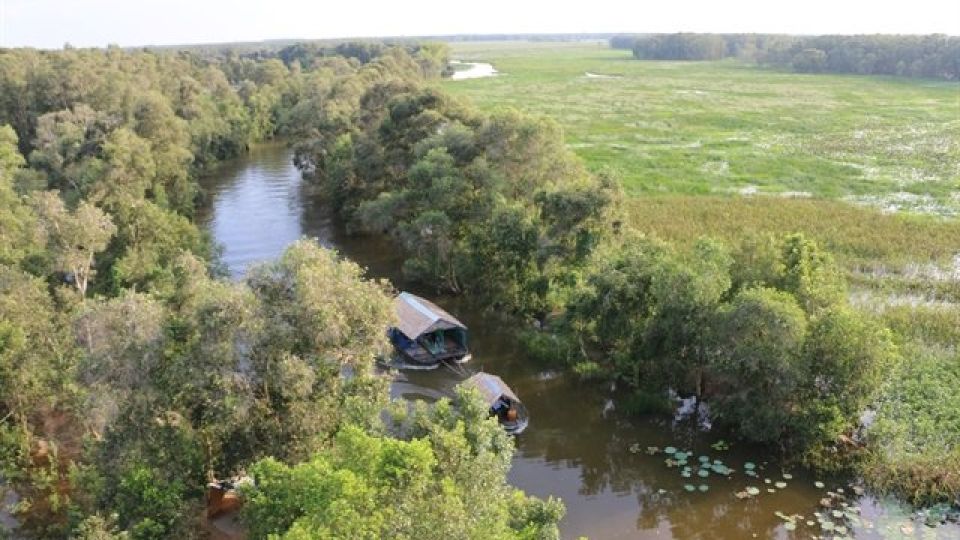February 24, 2023
HANOI — The conservation and sustainable use of the biodiversity and ecosystem services of wetlands (Ramsar sites) have contributed to sustainable socio-economic development, carbon storage, climate change adaptation, environmental protection, and nature and biodiversity preservation.
Dr. Dư Văn Toán from the Institute of Environmental Science, Seas and Islands under the Ministry of Natural Resources and Environment, said that mangroves are considered as a highly productive ecosystem in tropical and subtropical coastal areas globally, contributing 50 per cent of materials to the ocean from materials in the forest and 15 per cent of total organic matter in marine sediments.
The function of storing the organic carbon of wetlands plays an important role in global carbon stocks and the mitigation of climate change impact, Toán said, stressing the need to conduct research to provide policies and orientations on mangrove conservation and the assessment of carbon stocks.
According to the expert, with an area of about 150,000 hectares of mangrove forests and the current estimated price of US$5 per tonne of carbon dioxide, the benefits from trading carbon credits are huge. More importantly, if they are exploited effectively, there will be a large source of funds to increase income for the community and, at the same time, contribute significantly to forest protection and development in Việt Nam.
In addition, in order to fulfill commitments to and join the international community in reducing carbon emissions, it is necessary to have orientations on mangrove conservation and an assessment of carbon stocks in mangrove ecosystems in the coming time.
Accordingly, Việt Nam needs to develop a national policy on operating a carbon credit exchange and assess the economic valuation of carbon sequestration and storage functions of mangrove forests. It is also necessary for the nation to actively participate in and implement conventions on emission, deforestation and forest degradation reduction to enhance its position in the international arena; participate in and contribute to major international initiatives on mangrove restoration; and develop basic surveys on the calculation of carbon stocks in mangrove ecosystems.
Việt Nam became a member of the Convention on Wetlands, known as the Ramsar Convention, in 1989. So far, nine wetlands, with a total area of 120,549 hectares in the country have been recognised as Ramsar sites – wetlands of international importance. They are Xuân Thuỷ National Park (recognised in 1989), Bàu Sấu Wetlands and Seasonal Floodplains (2005), Ba Bể National Park (2011), Tràm Chim National Park (2012), Cà Mau Cape National Park (2013), Côn Đảo National Park (2014), Làng Sen Wetland Reserve (2015), U Minh Thượng National Park (2016), and Vân Long Wetland Nature Reserve (2017).
By now, a network of Vietnamese Ramsar sites has been set up and operated at the website https://vran.vn/.
To effectively implement the Ramsar Convention on Wetlands of International Importance Especially as Waterfowl Habitat, Việt Nam will prioritise perfecting mechanisms and policies related to the conservation and sustainable use of wetlands. — VNS


